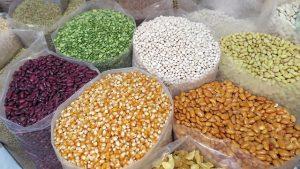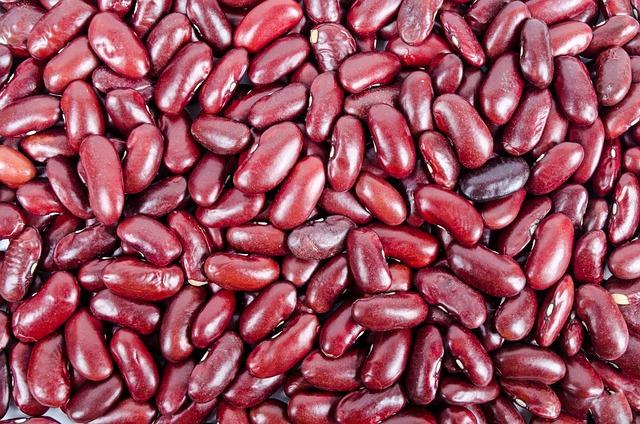
Are Beans Good For Diabetics?
Compared to other foods, beans are a food that normally does not receive a lot of appreciation. But because of their nutrient profile, low price, and positive environmental impact, they have quietly attained the title of superfood.
Additionally, a ton of research has shown how beneficial beans are for a variety of health conditions. But if you have diabetes, you might be asking if and how beans can be a part of your diet. Are beans healthy or bad for blood sugar levels? Now let us look.
What are beans?
Look in your pantry or cupboard; you may have some cans of chickpeas or kidney beans hidden there. Beans have a reputation for being a bit lower on the food chain and are frequently seen as a staple of the lower classes. They have been utilized as food since 9,000 years ago.
However, beans have always been thought to have unique abilities. Beans were placed in tombs by the ancient Egyptians as food for the dead as well as their spirits in the hereafter.
The United States is the “world leader in dry bean production,” according to The Bean Institute, and beans are now present in every culture. Every year, between 1.5 million and 1. 7 million acres of dry beans are planted by American farmers.
Beans are a member of the legume family, which also includes peas and lentils. According to the website aptly named Pulses, they are also known as “pulses,” the “edible seeds of plants in the legume family.” The seeds of several plant species are what we call beans.
Is it true that green beans, like black beans and kidney beans, are considered “beans”? No, as a matter of definition. Since green beans come in a pod, they are legumes rather than beans. We acknowledge that this is somewhat perplexing. But for this essay, the emphasis is on beans that are legumes and are not in a pod.
Types of beans
There are too many bean kinds to count, numbering in the hundreds. In different parts of the world, some varieties are more prevalent or well-liked. Here are some examples:
- Adzuki
A little, spherical, red bean with a seam down one side that is white. All around Asia are grown.
- Black bean
With a creamy texture, it is South and Central American native.
- Cannellini (white kidney bean)
Argentina-born, but highly well-liked in Italy. The beans feature a nutty flavor and a creamy texture.
- Fava bean (broad bean)
This bean, which is native to the Mediterranean region, grows in pods and can be consumed either fresh or cooked. They have a moderate, nutty flavor and are green in appearance.
- Garbanzo (chickpea)
The Middle East is the region of origin for this round, tan bean. The has a delicate nutty flavor.
- Kidney bean
A bean with the shape of a kidney and a moderate flavor.
- Mung
A little, round, green bean with a white stripe that is indigenous to India and Pakistan.
- Pinto
Originating in South America, this native has a moderate, slightly sweet flavor and is pink and brown.
Popular bean dishes
Despite the fact that you might not be enthusiastic about eating beans, it’s likely that you’ve already tried (and liked) foods that do, such as the following:
- Black bean soup
- Boston baked beans
- Hummus
- Refried beans
- Tuscan bean soup
- Navy bean soup
- Minestrone soup
- Red beans and rice
- Chili
- Cassoulet
A mainstay of vegetarian and vegan diets, beans have increased in popularity. There are recipes that employ beans in less “conventional” ways as well; some examples are black bean brownies, tortilla chips, bean smoothies, and Bolognese sauce made with beans rather than ground beef.
Do not be surprised if you browse the cereal section of your local grocery shop and discover that some cereals are manufactured with, you got it, beans!
Bean nutrition
Beans have a very amazing flavor, but their nutritional value is where they truly shine. Now let us examine what these legumes have to offer in more detail: –
Complex carbohydrate
Before you start to worry that beans are off-limits for people with diabetes, understand that the type of carbs present in beans are a combination of starch, resistant starch, nonstarch polysaccharides, and complex sugars known as oligosaccharides. These diverse carbohydrates are good for gut health and have low glycemic indexes, which means they are less likely to result in blood sugar increases.
Dietary fiber
Soluble and insoluble fibers can be found in beans. Blood cholesterol and blood sugar levels are reduced by soluble fiber. Colon cancer, diarrhea, and other digestive issues can all be avoided with insoluble fiber.
Protein
Since it can help you feel fuller for longer and may slow the digestion of carbohydrates, protein is a hot issue for people with diabetes. According to The Bean Institute, beans have a protein content of between 21% and 25% by weight. They are frequently utilized as a meat substitute because of this.
Vitamins and minerals
The majority of beans also contain magnesium, copper, iron, vitamin B6, riboflavin, thiamin, and folic acid in addition to potassium, which supports normal blood pressure.
Here is a breakdown of some of the most popular beans we typically consume in terms of their nutritional composition, displayed as a range.
Per 1 /2 cup serving:
- Calories: 110-125
- Carb: 19-24 grams
- Fiber: 5-1 O grams
- Protein: 6-9 grams
- Fat: 0.2-0.6 grams
- Sodium: 0-5 milligrams•
- Potassium: 305-502 milligrams
Beans and Diabetes
Beans are a healthy option for those who have diabetes, as was already mentioned. Beans’ soluble fiber is one of its main advantages. According to studies, consuming soluble fiber-rich foods in your diet will help reduce blood sugar and A1C levels.
Those with type 2 diabetes who consumed a cup of beans or lentils daily as part of a low-glycemic index diet were the focus of a study published in the Archives of Internal Medicine on October 22, 2012. Their A1C levels had decreased by 0.5 percentage points after three months.
According to a different study published in the journal Diabetes Care, soluble fiber reduces A1 C levels by roughly 0.6%.
What exactly is the mechanism of soluble fiber? In the digestive system, soluble fiber, commonly referred to as viscous fiber, gels up. Carbohydrate digestion is then slowed by the gel, which also inhibits glucose absorption. The outcome? decreases in A1C levels and blood sugars! Additionally, oats, apples, carrots, and barley are foods that are high in soluble fiber.
Speaking of soluble fiber, incorporating beans in your diet can also help lower LDL (“bad”) cholesterol. To stop cholesterol from being taken into the bloodstream, soluble fiber binds to it in the small intestine. Following that, the cholesterol is eliminated.
Beans can assist you in achieving your weight loss objectives, which can also benefit your blood sugar levels and cardiovascular health. As a result, you eat less because of their high fiber and protein content, which also helps to control your appetite.
You might be wondering, though, what about all those carbohydrates in beans? It is a good question, and the answer is that beans do contain carbohydrates. For the purpose of calculating carbs, a serving of beans is defined as 1/2 cup (or 1/3 cup for baked beans), which is “counted” as one carb choice and one lean protein choice.
The American Diabetes Association points out that 1/2 cup of beans “provides as much protein as an ounce of meat without the saturated fat.”
You can understand how beans and other meals affect your glucose levels by utilizing a blood sugar meter or CGM (continuous glucose monitoring).
Tips
- If all of this conversation about beans has made your mouth swim, fantastic! Here are some pointers to bear in mind:
- Take it easy on the beans if you aren’t used to consuming a lot of fiber. To reduce gassiness and bloating, increase your intake gradually.
- Beans in cans are quite cost-effective and convenient. They sometimes contain a lot of sodium, which is a drawback. Before eating the beans, either look for ones that have no salt added or give them a good rinse.
- Beans that have been dried can also be used. They must soak for at least eight hours or overnight. After that, you’ll have to cook them for 45 to 2 hours. View the directions here.
- When chopping, cooking, and prepping beans, an Instant Pot will save you a ton of time. It is possible to cook them after a quick soak in the saucepan for one minute (the time will vary based on the type of bean you use). Find out here how.
- To replace eggs in baked items if you do not consume them, use aquafaba, the liquid found in canned beans: Equivalent to one egg is three tablespoons of aquafaba. You can make meringue without using egg whites if you whisk aquafaba into firm peaks, too.
- There are numerous strategies to increase the amount of beans in your diet. Include them in any soups or stews you prepare. They can be added to salads as a garnish. When preparing meatballs or hamburgers, mix cooked beans with ground beef.
FAQs
Do beans raise your blood sugar?
Beans are a wonderful source of protein and fiber. Although beans include carbohydrates, they have a low glycemic index (GI) and do not significantly raise a person’s blood sugar levels. Beans are a type of complex carbohydrate.
Can diabetics eat beans and rice?
As long as it has been combined with beans, diabetic rice lovers can now savor white rice without concern. In a recent study, which was partially financed by the USDBC, researchers discovered that rice can cause blood sugar levels to rise, but beans, a healthy part of any diet, can prevent this from happening.
Can diabetics eat beans every day?
The final line is that, especially if you have diabetes, beans should be a staple in your diet. According to research in the journal JAMA, increasing one’s intake of beans, lentils, and other legumes can assist patients with type 2 diabetes to improve their glycemic control and reduce their risk of developing heart disease.
Are beans better than rice for diabetics?
Rice causes a substantially higher insulin response than beans, which are high in fiber and protein.


